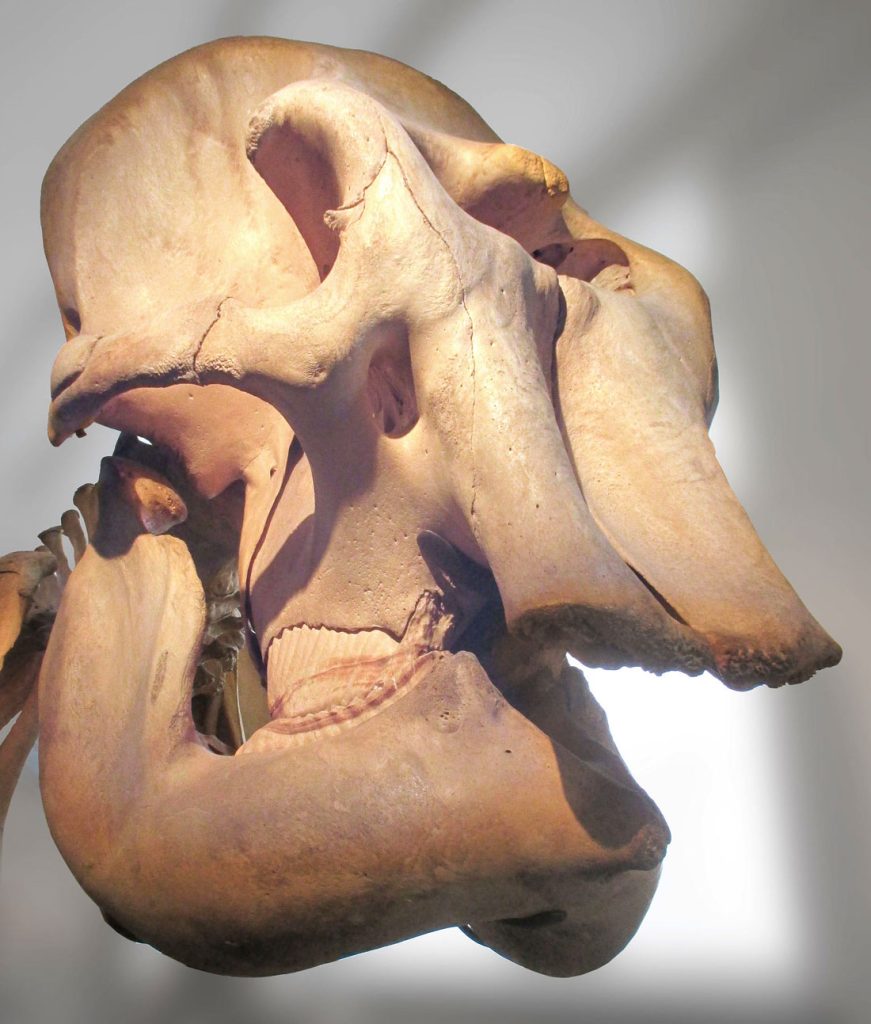Scientific Name
Elephas indicus
Also Called: Asian Elephant
Description

At a sizeable height of up to 10 feet tall, the Asian elephant is slightly smaller than its relative, the African Elephant. On average, the male Asian elephant (called a bull) weighs 7,000-11000 pounds. It has very large feet that distribute this enormous weight over a large surface area. Thick soles on the feet absorb shock and cushion legs when walking and running. Males have huge tusks, which are actually incisor teeth made of ivory that can measure up to 5 feet in length. The elephant uses these tusks to dig for food, clear debris, and carry logs up to 1 ton in weight. These tusks are very unique. The only other animal that has ivory tusks is the walrus.
Food
The Asian Elephant is a herbivore that favors bamboo, berries, mangoes, bananas, shrubs, tree foliage, wood, apples, wild rice, and coconuts. Since their bodies only make use of half of the food they consume, the elephant must eat between 330 and 350 pounds of food each day. In addition, they drink 22 to 30 gallons of water each day. To maintain this huge rate of consumption, the elephants must constantly travel to new areas in search of food and water.
Habitat
Elephants prefer thick forests with an abundant supply of food and a large amount of shade. They also like muddy areas, so they can cool off during the hot summer days.
Predators
The elephant has no natural enemies. Fully-grown elephants are so incredibly large that they can easily crush most predators. As a result, lions, hyenas, and tigers attack only the very young elephants. A baby elephant’s mother is very protective of her young. When she is away, other females of the herd look out for her young.
Social Structure
Elephants have a matriarchal society, which means that the leader of the herd is an elder female. Male elephants are actually more solitary in nature and usually only join a herd during mating season. The herd has a complex social structure. Members communicate with each other using a combination of gestures and sounds. For example, an elephant expresses anger by violently beating ground with its trunk. Elephants have shown a strong sense of commitment to other members of the herd. They have been known to stop and wait on a young elephant if it falls behind.
Birth & Offspring
Bull elephants battle for steed rights to the herd. Female elephants can start breeding at age 12. Once a female becomes pregnant, the baby will be born between 630 to 660 days later. This is the longest gestation period of any land animal. The baby elephant, called a calf, weighs about 200 to 250 pounds and is able to walk only 2 hours after it is born.
Senses
Elephants are very intelligent animals. They have shown very good problem solving skills. However, elephants have very poor vision. Their small eyes can only see 30 to 60 feet. They make up for their poor sight with keen senses of hearing and smell. An elephant’s large ears amplify sounds, letting it hear sounds that other animals cannot. Its sense of smell is thought to be superior to any other land animal. It also has a very good sense of touch. For such a large animal, the elephant is very deft, having the ability to balance on two legs if necessary to reach leaves in a tree. It also shows incredible balance when lifting large objects. Its sense of taste is much like that of other higher animals. It is able to tell the difference between food that tastes good and food that tastes bad, as well as food that tastes preferable.

Lydia King is a huge animal lover and has always been fascinated with learning about the animal kingdom. She enjoys writing about anything animal related from scientific information about rare species to animal references in pop culture.












